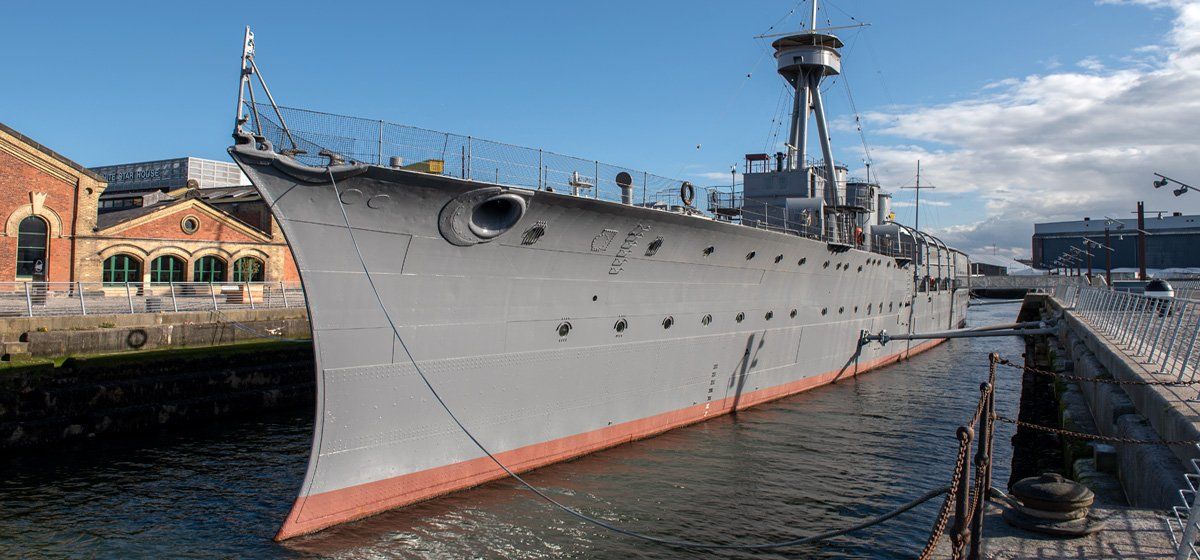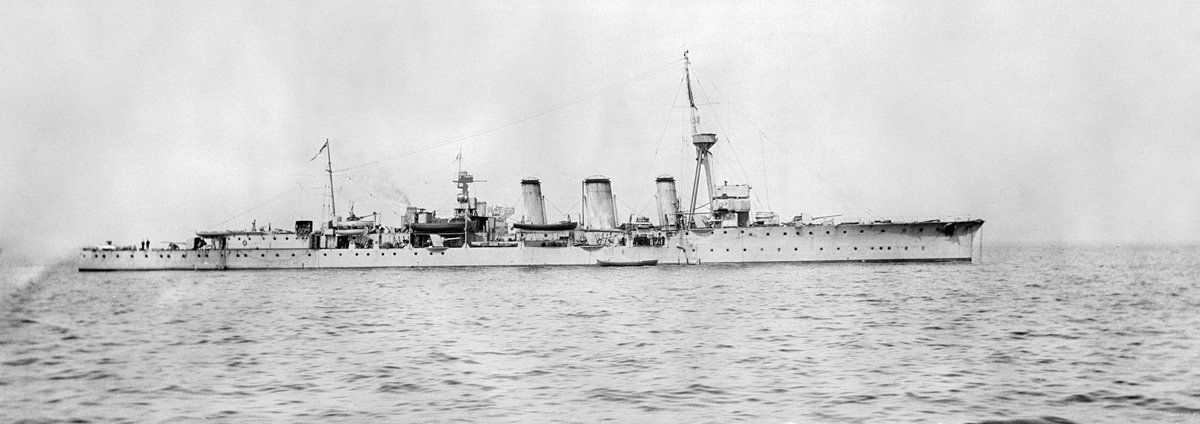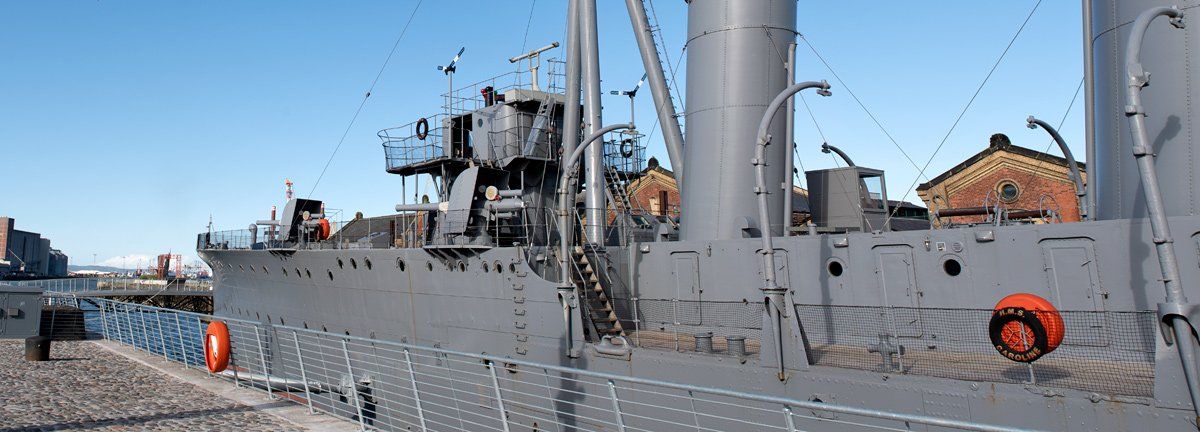H.M.S. Caroline
This unique C-Class cruiser was built by the Cammell Laird shipyard at Birkenhead in 1914, and the only surviving example of her class. Until decommissioned in 2011 she was the oldest commissioned warship in the Royal Navy, sister ships where HMS Cleopatra, Comus, Conquest, Carysfort and Cordelia. HMS Caroline was the fastest warship of her time and even by today's standards would still match the pace. Four Yarrow boilers supplied four independently geared Parson turbines and although oil-fired the ship could also burn coal. The 40,000-horsepower which was developed turned four propellers and gave the ship a top speed of 29 knots. Image below: Imperial War Museum.
The ship displaces 3,750 tons, measures 446 feet in length, has a beam of 31.5 feet and a draught of 14 feet 9 ins. The armour plating around the ship is four inches at the top and thins to two inches at the keel. Her armaments consisted of two six-inch guns aft, one 3-inch anti-aircraft gun just forward of the six-inch gun, two four-inch guns and twin 21- inch torpedo tubes on both sides of the ship and four, four-inch guns around the bridge area. After commissioning she joined the 4th Light Cruiser Squadron as part of the Grand Fleet at Scapa Flow, where she spent most of the time carrying out sweeps of the north and western approaches for enemy submarines. In May 1916 she took part in the Battle of Jutland acting as lead sweep for battle cruisers moving to engage the German Fleet. She is the only surviving warship from the Battle of Jutland.
The ship we see today has undergone several modifications to her superstructure over the years. A tripod mast was fitted in 1917 along with new guns ( 6” centre line and two 3” beneath the bridge wings), the conning tower was also removed at this time. In 1918 modifications were done to the forward deck where a platform was built over the forward gun to facilitate experiments with aircraft. A series of flight launches were undertaken from the deck to evaluate the potential, the plane though had to be recovered by a barge and crane. This deck was later removed. In 1919 HMS Caroline joined the East Indies Station where she served until 1922, after 9 years active service with the Fleet she was placed on the reserve list.
In January 1924, the Prime Minister of Northern Ireland, Sir James Craig, succeeded in having HMS Caroline transferred to Northern Ireland as the Headquarters for the newly formed Ulster Division of the Royal Naval Volunteer Reserve Force, one clause of her being located in Belfast was the removal of the ship's guns.Harland and Wolff converted her to a depot and training ship, the boilers were removed and the space converted into workshops and classrooms, a new superstructure was built aft of the funnels to provide the hall for cadet drilling and later In 1940, the Captain's quarters were constructed aft of the ship. HMS Caroline was the longest-serving commissioned ship in the Royal Navy having been in service for 92 years. Today she open to the public and berthed at the Alexandra Dock for more details on how to get there and book your visit follow this link: Visiting HMS Caroline.




